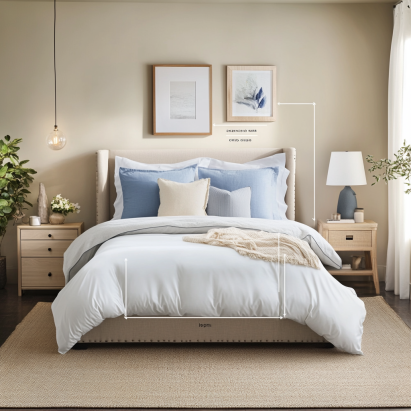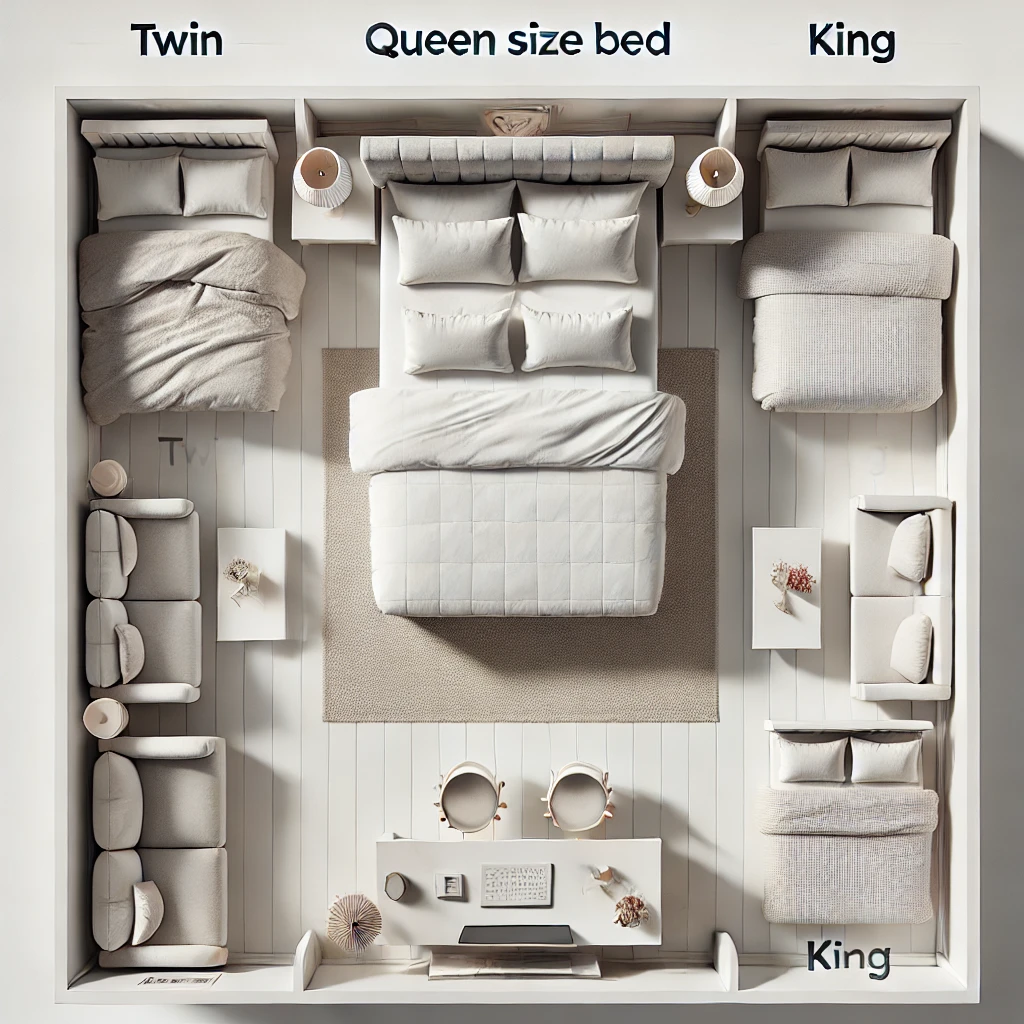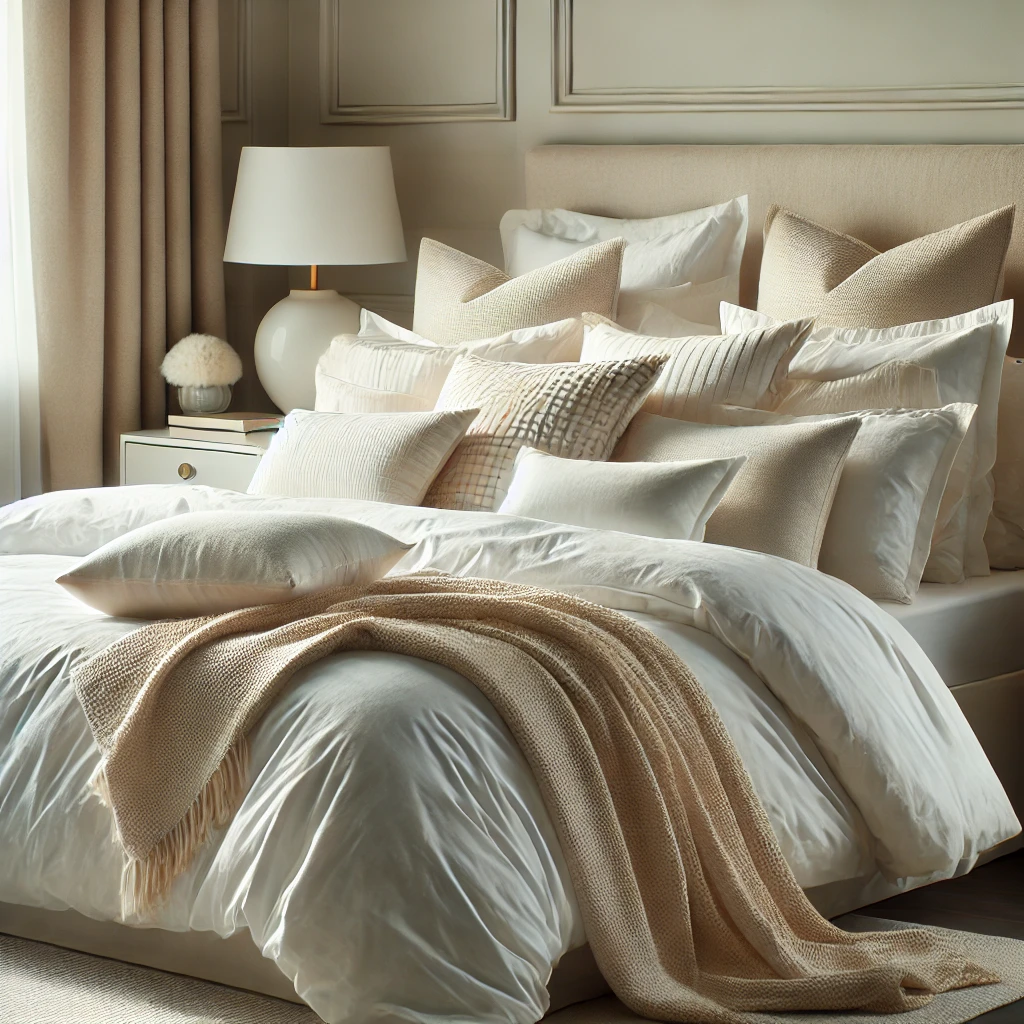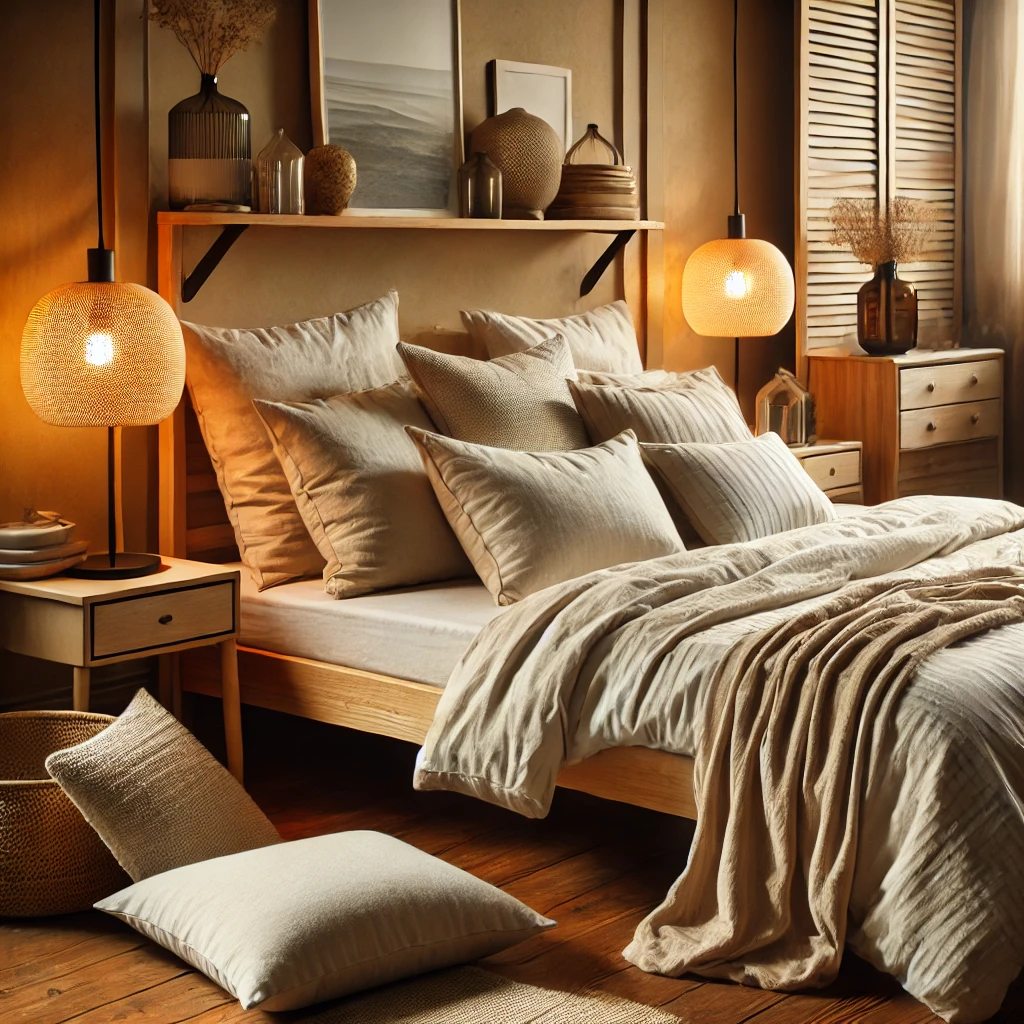Bed Sizes Compared
When bed sizes compared are on your mind, it’s all about finding the perfect fit for your sleep sanctuary—not just squeezing a frame into your room. See our full guide on choosing the right bed size for more tailored advice.
Key Takeaways
- Understanding mattress size differences helps you create the ideal sleep environment tailored to your needs.
- Choose based on room dimensions, lifestyle, and personal comfort.
- Layering with textures and materials elevates your sleep space.
- A queen balances space and affordability for most couples in a bed size comparison.
Full Size: The Compact Classic
Full-size beds shine when mattress size differences lean toward small spaces. At 54 inches wide, it’s not too big or too tiny—perfect for one person to stretch out without hogging the room. A full bed is a snug haven for solo sleepers or a stylish step up from a twin for teens. Check the Sleep Foundation’s mattress size guide for official dimensions.

In summary, the full-size bed is a cozy choice, especially for compact living spaces.
Queen Size: The Crowd-Pleaser
When mattress size comparison hits the middle ground, queens rule. With 60 inches of width—six more than a full—it’s a sweet spot for solo starfishers or couples who like closeness. The 80-inch length suits most adults perfectly, per the Mattress Firm mattress size chart. It balances affordability with generous space and is widely available in stylish bedding.

Overall, the queen bed strikes a balance between intimacy and space, making it a popular choice.
King Size: The Spacious Sovereign
In mattress size differences, kings are the ultimate sprawl zone. At 76 inches wide—like two twins side by side—it’s built for couples craving space, kids who sneak in, or pets who rule the roost. It’s less about fitting in and more about stretching out in style. Plus, split kings give dual comfort zones with adjustable bases.

The king-size bed offers unparalleled luxury, making it ideal for spacious rooms and those who value comfort.
California King: The Long and Lean
Among mattress size differences, the California king stands out with its extra length. Measuring 72 inches wide by 84 inches long, it’s ideal for taller sleepers who need the added space for legs without compromising on comfort. This size also fits narrow rooms better than a standard king, making it a smart pick for certain layouts. Although bedding may be a bit more specialized, the luxurious stretch is worth it for many.
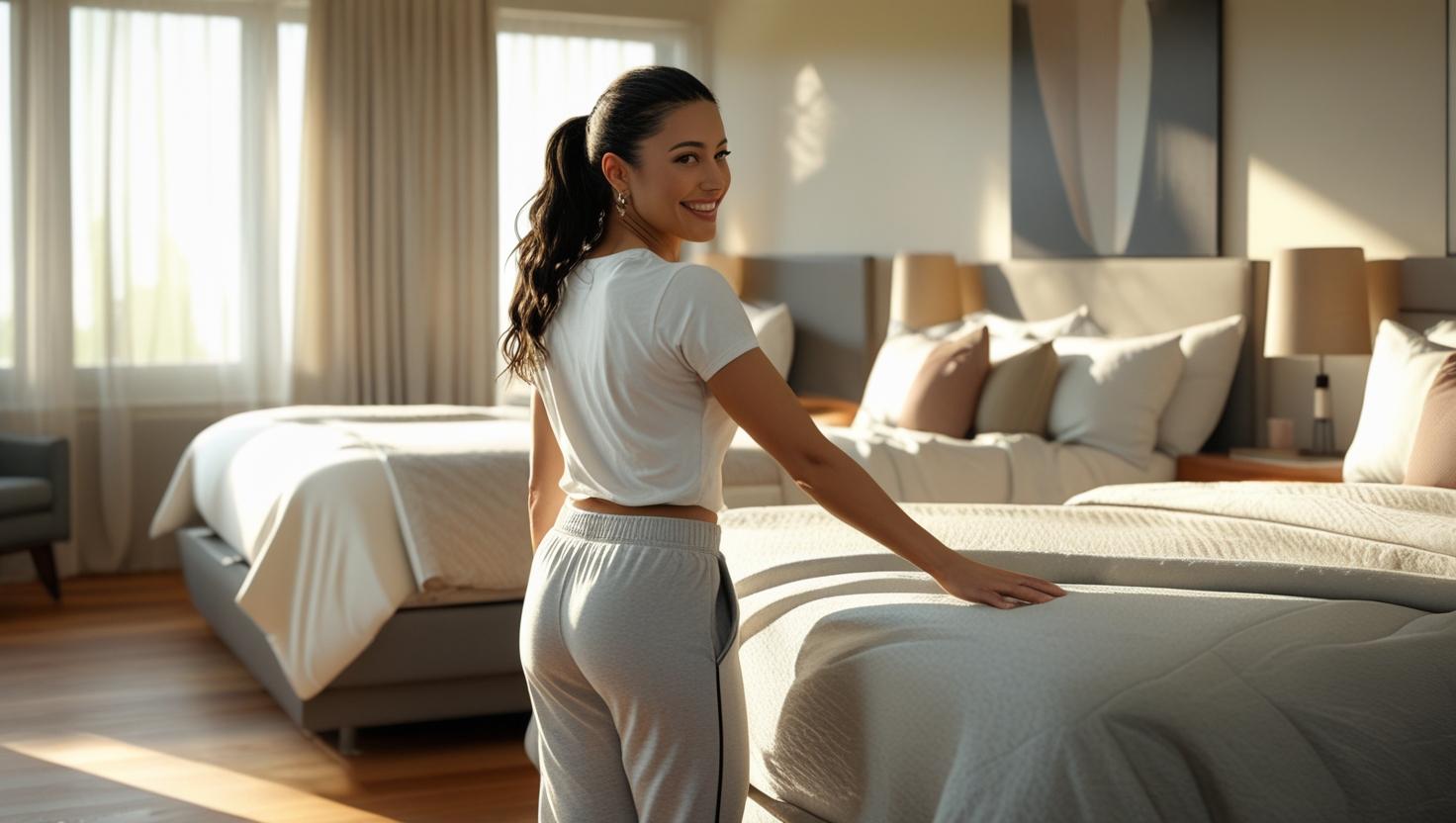
If length is your priority, the California king delivers supreme comfort for the tall and the stylish.
Quick Comparison Table
| Size | Width x Length | Best For | Room Size | Cozy Bonus |
|---|---|---|---|---|
| Full | 54” x 75” | Solo, teens, guests | 10×10 ft | Snug solo nook |
| Queen | 60” x 80” | Couples, solo sprawlers | 12×12 ft | Intimate yet spacious |
| King | 76” x 80” | Couples, families, pets | 14×14 ft | Ultimate sleep sanctuary |
| California King | 72” x 84” | Taller individuals, long rooms | 14×12 ft | Extra legroom luxury |
Common Mistakes When Choosing Bed Sizes
When doing a bed size comparison, shoppers often overlook practical details. One common mistake is underestimating room size—a king may fit on paper but feel overwhelming if there’s no clearance to walk around. Another pitfall is ignoring future needs; couples planning for kids or pets often regret buying too small. Finally, forgetting bedding availability can lead to frustration. California kings, for example, may have limited sheet options compared to queens.
Avoiding these errors ensures you don’t just buy a mattress—you invest in a restful, future-proof sleep setup.
Buyer’s Guide: Cost Differences
Mattress size differences aren’t just about space—they affect your budget, too. A full-size mattress typically costs the least, making it attractive for students, guest rooms, or starter apartments. A queen offers the best balance of affordability and space, with bedding that’s widely available at reasonable prices. Moving up to a king increases cost by 20–40%, not just for the mattress but for sheets, duvets, and even larger bed frames. The California king, while similar in price to a standard king, often comes with higher accessory costs since specialty bedding is less common.
If budget is a concern, weigh not only the mattress price but also the ongoing cost of bedding and accessories. This way, you’ll have a clear view of total ownership expenses before committing.
How to Choose Your Perfect Size
Bed size comparison comes down to your lifestyle, sleeping preferences, and space allowance:
- Solo Sleeper? Full’s a budget hug; queen’s a luxe leap.
- Couple? Queen if you’re cozy-close; king for space hogs.
- Room Size? Measure twice—2-3 feet around for flow.
- Sleep Style? Restless? Go big. Love a tuck-in? Full’s fine.
- Taller Than Average? Consider a California king to avoid cold feet and tight fits.
Cozy Tip of the Day
No matter which size wins in your bed size comparison, layer it up—2025’s obsessed with texture. Bamboo sheets for fulls, cooling cotton for queens, or a flannel duvet on a king turn your bed into a cozy command center. Browse layering ideas at Parachute Home.
FAQ
- What is the best bed size for couples?
- A queen or king size is best for couples, with the king providing more space and comfort for varied sleep habits.
- How do I choose the right bed size?
- Consider your sleeping style, room size, budget, and whether you sleep alone or with a partner or pets.
- Is a queen bed good for small rooms?
- Yes, if your room is at least 10×10 ft, a queen can fit nicely with adequate walking space around it.
Final Thoughts
When bed sizes compared are lined up, the best choice depends on your lifestyle, room size, and comfort needs. Whether it’s the snug full, the balanced queen, the roomy king, or the long California king—your bed should fit your life, not the other way around. Ready to choose? Explore our top mattress picks for couples or learn about twin vs full beds.
Related Reading from Cozy Bed Quarters
- Standard Bed Size Chart: Mattress Dimensions (2025)
- King vs California King Comparison
- Perfect Rug Size for Queen Bed Layouts
Other Reading We Found Popular
- Sleep Foundation: Mattress Sizes Guide
- Parachute Home: Bedding Collections
- Architectural Digest: Bedroom Layout Ideas

